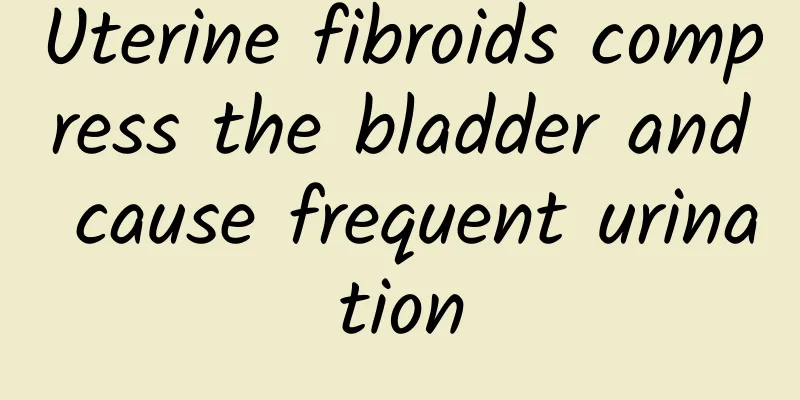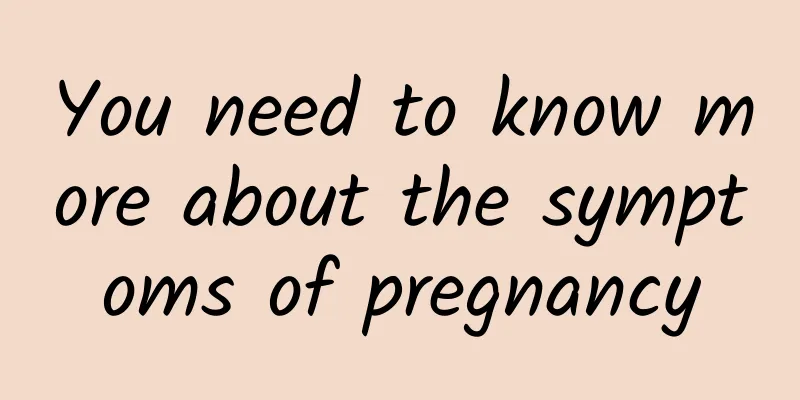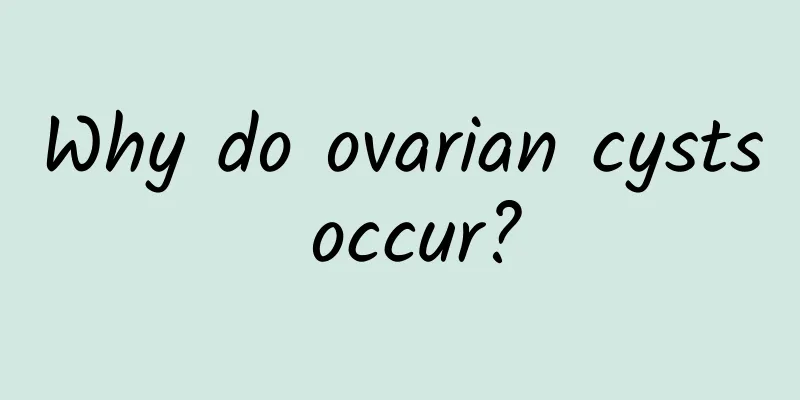Uterine fibroids compress the bladder and cause frequent urination

|
Among gynecological diseases, uterine fibroids are relatively common. Uterine fibroids compress the bladder and easily cause symptoms of frequent urination. The early symptoms of uterine fibroids are not obvious. If uterine fibroids are not actively treated in the later stages, fertility will be affected. Uterine fibroids are a well-known disease. The following will introduce to you the harmful manifestations of uterine fibroids. 1. Pain: Severe abdominal pain. Patients with uterine fibroids may experience nausea, vomiting, fever, and leukocytosis. Tumor compression of nerves may produce radiating pain. This is one of the harmful manifestations of uterine fibroids. 2. Compression symptoms: Patients with uterine fibroids may experience compression of the bladder or urethra, resulting in frequent urination and urination difficulties. Uterine fibroids may compress the rectum and cause defecation difficulties. 3. Vaginal bleeding: Common symptoms of uterine fibroids include excessive menstrual flow, shortened and irregular menstrual cycles, and prolonged duration. According to the location of the fibroids, the most likely to cause uterine bleeding are intramural fibroids and submucosal fibroids, while subserosal fibroids are less likely to cause menstrual changes. 4. Infertility: The growth of uterine fibroids causes the uterus to deform, and the obstruction of the entrance to the fallopian tube can affect the entry of sperm into the fallopian tube, and the tumor hinders fertilization. This is also the most serious manifestation of the harm of uterine fibroids. Subserosal fibroids can twist at the pedicle, causing acute abdominal pain. If the pedicle is severely twisted and surgery is not performed immediately or it cannot be turned back by itself, the pedicle may be broken and a free fibroid may be formed, as mentioned above. The twisted fibroid can also drive the entire uterus, causing axial torsion of the uterus. The site of uterine torsion is mostly near the internal opening of the cervical canal, but this situation rarely occurs. It is mostly caused by a larger subserosal fibroid attached to the bottom of the uterus and the cervical canal is relatively slender. The symptoms and signs are similar to those of ovarian cyst pedicle torsion, except that the mass is harder. |
<<: What are the symptoms of cervical erosion
>>: What medicine is good for cervical erosion
Recommend
Can patients with bacterial vaginosis have sexual intercourse? How is bacterial vaginosis transmitted?
The appearance of bacterial vaginosis makes many ...
Family members must organize the nursing work of patients with uterine fibroids
The appearance of uterine fibroids will seriously...
How to prevent nasal allergies during exercise? 5 tips to check out
It’s March again, the season when allergies are m...
What are the preventive measures for pelvic effusion?
Pelvic effusion is a manifestation rather than a ...
Let's take a look at the precautions before abortion
Abortion is a common method of abortion, which br...
Anne Hathaway swallows oatmeal and Natalie has a bird stomach
The Golden Globe Awards, the international film a...
What should a girl do if she suffers from uterine fibroids? What causes a girl to suffer from uterine fibroids?
Many people think that uterine fibroids are exclu...
Is uterine fibroid a benign tumor? The best treatment for uterine fibroid surgery
Uterine fibroids are called uterine leiomyoma, wh...
Doctors teach you how to tell whether a woman has had an abortion?
Generally, after medical abortion or surgical abo...
What are the causes of Bartholinitis?
The Bartholin's gland has a thin duct like an...
What are the consequences of uterine fibroid degeneration? What are the dangers of uterine fibroid degeneration?
Degeneration of uterine fibroids refers to abnorm...
The following is an introduction to the types of cervicitis
After a woman suffers from cervicitis, she should...
What kind of folk method is best for treating female cervical erosion? Share the folk method of treating female cervical erosion
Which traditional remedy is best for treating cer...
What are the dangers of uterine fibroids
Treatments for uterine fibroids include medicatio...
Endocrine disorders are often the cause of dysmenorrhea
The cause of dysmenorrhea causes people to suffer...









